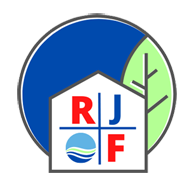Have you ever wondered what is in the air that you breathe and if it can make you sick? According to a study conducted by the Environmental Protection Agency (EPA), indoor air can be up to five times more polluted than outdoor air! Sick Building Syndrome (SBS) is a condition that affects people who spend a significant amount of time indoors, both in residential and commercial buildings. It is a phenomenon where people experience various symptoms related to the building they live in or work in. These symptoms can include headaches, dizziness, nausea, eye, nose, or throat irritation, dry cough, dry or itching skin, difficulty in concentration, fatigue, sensitivity to odors, hoarseness of voice, allergies, cold, flu-like symptoms, respiratory increased incidence of asthma attacks and personality changes. *
Many factors cause indoor air pollution, including the use of synthetic materials in construction, inadequate ventilation, and the presence of mold. One of the most common contaminants of indoor air is volatile organic compounds (VOC). Volatile Organic Compounds (VOCs) are chemicals that are released into the air from everyday products and materials. They can be found in things like cleaning products, paints, and building materials. VOCs can be harmful to human health and the environment and can contribute to indoor air pollution.
That “new car smell” is a perfect example of VOCs. The odor that is released into the air comes from the chemicals of the upholstery, the carpet, or even the cleaning products used to produce a new car.
The main sources of VOC are adhesives, upholstery, carpeting, copy machines, manufactured wood products, pesticides, cleaning agents, etc. They also come from tobacco smoke, respirable particulate matter, and combustion byproducts from stoves or fireplaces. Also, unvented space heaters increase chemical contamination. Synthetic fragrances in personal care products or cleaning and maintenance products also contribute to the contamination.” *
The reason that the “new car smell is so potent is because it is closed in a very small area. Imagine new flooring in your home, or new furniture, cabinets, paint job. All these products release VOCs into the air, and might not even be detectable if the area is large enough.
Biological contaminants can also affect the air we breathe. They include pollen, bacteria, viruses, fungus, and mold. These biological contaminants can come from and breed in stagnant water that has accumulated in humidifiers, drainpipes, and ducts where water has collected on ceiling tiles, insulation, carpets, and upholstery.
Mold is a common cause of indoor air pollution and can cause a wide range of health problems. Mold can grow in damp areas such as bathrooms and basements, but mold is also found in HVAC systems. There are different types of molds, some being more dangerous than others. However high levels of all mold exposure can cause respiratory problems, skin irritation, and other health issues. A study conducted by the World Health Organization (WHO) found that mold exposure can increase the risk of respiratory disease by 30-50%.
So how do you know if you have an indoor air problem?
TEST the air you breathe. It is essential to test indoor air quality to determine the presence of pollutants. Testing can identify the source of the problem and allow corrective action to be taken. Testing can also help identify mold as well as other sources of indoor air pollution such as chemicals from cleaning products, painted rooms, and tobacco smoke.
Sick Building Syndrome is a serious condition that can cause commercial and residential dwellers significant problems. In commercial buildings, SBS can lead to decreased productivity, increased absenteeism, and increased healthcare costs. In residential buildings and homes, SBS can lead to decreased quality of life and increased healthcare costs.
The effects of indoor air pollution can be severe, particularly for vulnerable populations. Children, the elderly, and individuals with pre-existing respiratory conditions are especially at risk. According to the American Lung Association, indoor air pollution is a significant trigger for asthma attacks. Over 25 million Americans, including 7 million children, suffer from asthma, making it a major health concern.
This is why RJF Environmental Consulting Services is trying to educate the South Florida population on indoor air pollution as well as Sick Building Syndrome. It is essential to take steps to improve indoor air quality to ensure the health and well-being of your family and your co-workers.
Here are ten things that can be done to improve indoor air quality:
1. Increase ventilation – Improving ventilation is one of the most effective ways to improve indoor air quality. Opening windows and doors and using exhaust fans can help to increase the flow of fresh air into the building.
2. Use air purifiers – Air purifiers are effective at removing pollutants and allergens from the air. They can be particularly useful for individuals with respiratory conditions and allergies. However, the placement of these air purifiers is essential, so you are not drawing pollution towards you.
3. Clean regularly – Regular cleaning with the correct cleaning products can help to reduce the amount of dust and other pollutants in the air. Vacuuming carpets and upholstery, dusting, and mopping floors can all help to improve indoor air quality.
4. Reduce the use of harmful chemicals – cleaning products, pesticides, and other chemicals can contribute to indoor air pollution. Using natural, non-toxic alternatives can help to reduce the amount of harmful chemicals in the air.
5. Avoid smoking indoors – Tobacco smoke is a major source of indoor air pollution and can cause a wide range of health problems. Avoid smoking indoors or designate a smoking area outside.
6. Control humidity levels – High humidity can lead to mold growth, while low humidity can cause respiratory problems. Maintaining humidity levels between 30-50% can help to improve indoor air quality.
7. Be aware of any standing water in or around your house. During the flu season, personal humidifiers are use
d for the very young and very old. Most of these machines are left with standing water that can grow mold and or bacteria and when turned on, can release toxic spores into the air. Make sure any humidifier used is cleaned and dried thoroughly.
8. Maintain HVAC systems – Regular maintenance of heating, ventilation, and air conditioning (HVAC) systems can help to improve indoor air quality. Replacing filters and cleaning ducts can help to remove pollutants from the air.
9. Monitor indoor air quality – Monitoring indoor air quality can help to identify sources of pollution and take corrective action. RJF recommends and installs Indoor air quality monitors. It will measure pollutants such as carbon monoxide and particulate matter and notify you of any issues big or small.
10. Test your house or office for any mold problems and address them quickly – Mold can be a significant source of indoor air pollution. If mold is present, it should be addressed promptly to prevent further growth and the spread of spores. Professional mold remediation may be necessary in severe cases.
*https://www.ncbi.nlm.nih.gov/pmc/articles/PMC2796751/


